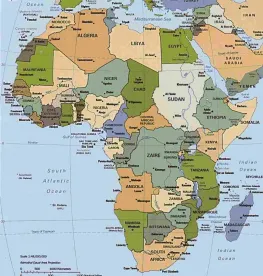The Loan Market Association (LMA) recently published a short user guide and recommended forms of facility agreements for use in South Africa (the South Africa Documentation) and in Kenya, Nigeria, Tanzania and Uganda (the East African and Nigerian Documentation).
The LMA has been at the forefront of developments in the syndicated loan market with its forms of documentation being used as the starting point in a range of financing transactions throughout Europe, the Middle East and Africa (EMEA). The launch of a specific form of documentation for use in South Africa, East Africa and Nigeria is a reflection of the growth and importance of those African markets, and the corresponding need for debt finance.
The forms of facility agreement in each case are based on the LMA’s Developing Markets Secured Document published in September 2012, which was based on the LMA’s Recommended Forms of Primary Documents (the Primary Documents) for both the investment grade market and leveraged acquisition finance transactions. Unlike the Development Markets Secured Document, which is governed by English law and subject to the jurisdiction of the English courts, (with an option to apply for arbitration), the South African Documentation and East African and Nigerian Documentation are subject to the applicable local law, and the jurisdiction of those courts.
Currently, the East African and Nigerian Document consists of a single currency, secured and unsecured term facility, which is very similar to the form of Developing Markets Secured Document. The South African Documentation consists of four forms of facility agreement, all unsecured and anticipated to be used for investment grade borrowers: a single currency term facility for multiple borrowers, a single currency revolving facility for multiple borrowers, a single currency unsecured term and revolving facility to a single borrower and a single term unsecured facility to a single borrower.
The forms of facility agreements are intended to be a starting point for discussions rather than the definitive form, with the form of final facility agreement depending on the transaction structure and the credit–related specifics of the transactions, with legal and tax advice still being required.
Given the LMA standard documentation, one particular challenge for a legal practitioner going forward is to consider whether any changes adopted from time to time in some LMA documentation should also be reflected in any new transaction. While periodic updates are made, some of the provisions consistently seen in other markets are only included in some of the forms. For example, the current LMA leverage facility agreement deals with issues such as defaulting lenders or impaired agents, but this language, which applies to all other syndicated transactions, is not included in other LMA facility agreement documentation.
Another challenge is what representations and covenants should apply in relation to anti-corruption procedures and sanction compliance. Increasingly, such provisions are being routinely requested by lenders as part of their credit sanction regardless of the credit status of the obligors or jurisdiction. The LMA has published an explanatory paper on these topics, but anti-bribery and sanction language is not currently in the Primary Documentation; however, there is a short representation on anti-bribery in the leverage form. In contrast, the East African and Nigerian Documentation contains the most extensive anti-bribery and sanction language, whereas the South African documentation has sanctions language, but no anti-bribery language, and the Developing Markets form has anti-bribery but no sanctions wording.
To keep abreast of these developments, participants active in these markets should obtain access to the LMA website either directly as a member or via its legal counsel, who will need to be an LMA member.



 />i
/>i
